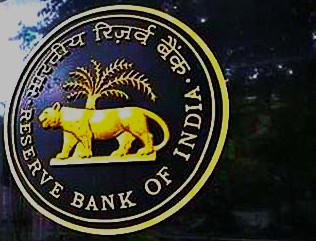In a major boost to India’s fiscal position, the Reserve Bank of India (RBI) has announced a record ₹2.11 lakh crore dividend payout to the central government for the financial year 2023-24. This marks a 27% increase over its previous record payout and significantly exceeds the Union Budget estimate of ₹1.02 lakh crore. The sharp rise is attributed to the RBI’s higher income from foreign investments, rising interest rates globally, and strong domestic market returns.
The dividend payout was made possible by a recalibrated risk provisioning strategy. The Contingency Risk Buffer (CRB)—RBI’s capital cushion against unforeseen shocks—was increased to 6.5% from 6%, in line with recommendations of the Bimal Jalan Committee. This adjustment indicates the central bank’s confidence in its financial stability while still preserving operational autonomy.
The windfall gives the government added fiscal headroom, which could be used for capital expenditure, reducing borrowing, or narrowing the fiscal deficit. However, it may also lead to excess liquidity in the system, which the RBI may have to sterilize to keep inflation in check. Overall, this dividend reflects a rare alignment of monetary and fiscal policy interests, offering short-term relief without compromising long-term stability.
Understanding the Dividend Surge:
The Numbers at a Glance:
- Dividend Paid (FY24): ₹2.11 lakh crore
- Dividend Paid (FY23): ₹87,416 crore
- Increase: Over 140% YoY in absolute terms, 27% above prior expectations
- Contingency Risk Buffer (CRB): Raised to 6.5% from 6% of RBI’s balance sheet size
This marks the highest-ever transfer from RBI to the exchequer, far exceeding the government’s budget estimate of ₹1.02 lakh crore.
Why Did RBI Transfer More?
Robust Surplus from Investments:
- RBI earned higher returns on its foreign exchange reserves amid rising global interest rates.
- Domestic bond yields and higher transaction volumes also supported income growth.
Controlled Expenditure:
- Operational expenses were efficiently managed.
- There was a lower provisioning need for depreciation or bad assets.
Revised Risk Buffer Strategy:
- The Contingency Risk Buffer (CRB)—which acts as a safety net against unforeseen risks—was raised to 6.5%, reflecting RBI’s confidence in its balance sheet resilience.
- This allowed a larger portion of surplus income to be paid out while still maintaining prudent risk cover.
Implications for the Indian Economy:
🏛️1.Fiscal Headroom for the Government:
- The unexpected windfall eases pressure on fiscal deficit targets. With this higher-than-anticipated dividend:
- The government has more room for capital expenditure, social schemes, or fiscal consolidation.
- It may help lower the fiscal deficit, keeping it closer to the 5.1% target for FY25 without compromising on spending priorities.
🔁 2. Potential Impact on Borrowing:
- With higher non-tax revenues from RBI, the government could reduce its market borrowing. This could:
- Lead to lower yields on government securities (G-Secs).
- Support the bond market, especially as it prepares for India’s inclusion in global bond indices later this year.
💸 3. Liquidity and Inflation Considerations:
- While the dividend boosts fiscal space, it also raises concerns over excess liquidity in the banking system:
- RBI will likely sterilize liquidity through Open Market Operations (OMOs) or other instruments to manage inflationary risks.
- The central bank’s monetary tightening stance remains intact until inflation stabilizes around its target.
Monetary-Fiscal Synergy or Risk?
While the higher dividend showcases a healthy central bank balance sheet, experts caution against reading it as a permanent trend. It reignites the debate on central bank independence vs. government financing.
RBI Governor Shaktikanta Das has emphasized that the dividend decision is consistent with Bimal Jalan Committee recommendations, which govern RBI’s capital framework and ensure operational autonomy. The transparency and rules-based framework preserve institutional credibility.
Historical Context: How Unusual Is This?
| Year | RBI Dividend (₹ Cr) | Notes |
|---|---|---|
| 2018-19 | ₹1.76 lakh crore | Included ₹52,000 crore as excess capital (Bimal Jalan panel) |
| 2020-21 | ₹99,122 crore | Despite COVID hit |
| 2022-23 | ₹87,416 crore | Regularized payout |
| 2023-24 | ₹2.11 lakh crore | Highest ever |
The 2023-24 payout is exceptional, not just in magnitude but also in timing, aligning with India’s efforts to maintain fiscal discipline while pushing for growth.
Final Thoughts: A Fiscal Tailwind, But Not a Fiscal Crutch
The RBI’s ₹2.11 lakh crore dividend is a welcome boost for the Indian government’s finances in a pre-election year. However, it’s crucial to view this as an opportunistic windfall, not a structural fiscal solution. Going forward, sustainable tax collections, rationalized expenditure, and robust economic growth must drive India’s fiscal consolidation path.
With a stronger CRB and high dividend, the RBI has managed to support fiscal needs without compromising monetary stability. This balancing act, if sustained, can reinforce investor confidence and macroeconomic stability as India eyes sustained high growth amid global volatility.















Wealth Management
This is a significant development for India’s economy, and it’s interesting to see how the RBI’s strategic adjustments have led to such a substantial dividend payout. The increase in the Contingency Risk Buffer to 6.5% shows a balanced approach between financial stability and operational autonomy. It’s impressive how the RBI managed to boost its income through foreign investments and domestic market returns despite global economic uncertainties. The government now has more fiscal flexibility, which could be crucial for reducing borrowing or investing in infrastructure. However, I wonder if this influx of liquidity might complicate inflation control efforts in the near future. Do you think this dividend trend can be sustained, or is it more of a one-time windfall? Also, how do you see this impacting the RBI’s independence in the long run? Would love to hear your thoughts!